#jotunn culture
Text

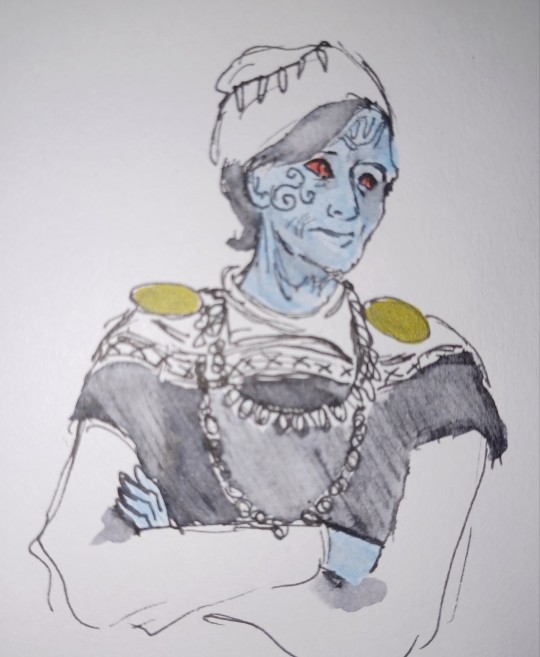
Helblindi Laufeyson, older brother of Loki, though not aware that his younger sibling survived birth. Also, Laufey's mother, done with her son's shit, ready for her grandsons to take over. Clothing (and culture) is inspired by Celtic and Scottish Gaelic designs
2 notes
·
View notes
Text
Deep dives into folklore: Norse mythology
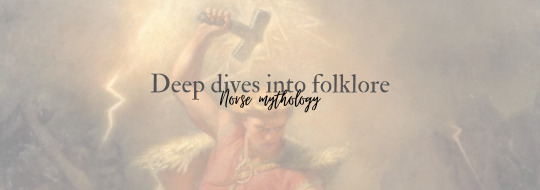
Norse mythology is a rich and complex tapestry of tales, gods, and creatures that originated from the pre-Christian belief systems of the Norse people, who lived in what is now Scandinavia. These myths have been preserved primarily in two major sources: the Prose Edda, written by Snorri Sturluson in the 13th century, and the Poetic Edda, a collection of anonymous poems from earlier centuries. Together, they provide a fascinating glimpse into the worldview, cosmology, and cultural values of the ancient Norse people.
Cosmology: The Nine Worlds
Norse mythology describes a cosmology that is divided into nine interconnected worlds, held together by the World Tree, Yggdrasil. These worlds are:
Asgard: The realm of the Aesir gods, including Odin, Thor, and Frigg. Asgard is often associated with the sky and serves as the dwelling place of the divine.
Midgard: The realm of humans, representing the Earth. Midgard is connected to Asgard by the Bifrost, a rainbow bridge.
Vanaheim: Home to the Vanir gods, a group of deities associated with fertility, prosperity, and nature. The Aesir and Vanir fought a war in the past but eventually established a truce.
Jotunheim: Inhabited by the Jotnar, or giants, who are often portrayed as antagonists to the Aesir. Not all giants are malevolent, and some even form alliances with the gods.
Alfheim: The realm of the Light Elves, benevolent and ethereal beings associated with light and beauty.
Svartalfheim: Home to the Dwarves, skilled craftsmen and blacksmiths who create powerful artifacts for the gods.
Nidavellir: Another realm associated with Dwarves, specifically known for its connection to the creation of the legendary hammer Mjolnir, wielded by Thor.
Helheim: The realm of the dead, ruled by the goddess Hel. It is a realm for those who did not die in battle and is often described as a cold and dreary place.
Muspelheim: A realm of fire and heat, inhabited by fire giants and ruled by the fire giant Surtr. Muspelheim is associated with chaos and destruction.
The Pantheon of Gods
The Norse pantheon is composed of a diverse array of deities, each with distinct personalities, domains, and roles. Some of the key gods include:
Odin: The Allfather and chief of the Aesir. Odin is associated with wisdom, war, poetry, and magic. He sacrificed an eye at Mímir's well to gain knowledge.
Thor: The thunder god, known for his incredible strength and his powerful hammer, Mjolnir. Thor is a defender of Asgard and Midgard.
Frigg: Odin's wife and queen of the Aesir. She is associated with fertility, motherhood, and wisdom.
Loki: A trickster god and shape-shifter, often causing mischief among the gods. Despite being a Jotunn, he forms complicated alliances with the Aesir.
Balder: The god of beauty, light, and joy. Balder's death becomes a significant event in Norse mythology, leading to Ragnarok.
Freya: A goddess associated with love, beauty, and fertility. She is also skilled in magic and has a connection to the Valkyries.
Ragnarok: The End of the World
Norse mythology predicts a cataclysmic event known as Ragnarok, signaling the end of the world and the rebirth of a new cycle. During Ragnarok, a series of events unfold, leading to the downfall of many gods, the destruction of Yggdrasil, and the submersion of the world in water. The surviving gods and two human survivors will then emerge to repopulate the world and begin a new era.
Norse mythology provides a rich and multifaceted view of the world, blending elements of creation, destruction, fate, and free will. The stories and characters within this mythology continue to captivate readers and have left a lasting impact on popular culture, influencing literature, art, and entertainment for centuries. The intricate web of relationships among gods, giants, elves, and humans creates a narrative tapestry that reflects the complexities of the human experience and the forces that shape the world.
Taglist (reply/reblog to be added):
@axl-ul @crow-flower @thoughts-fromthevoid @alderwoodbooks @harleyacoincidence @tuberosumtater @sonic-spade @theonlygardenia @holymzogynybatman @nulliel-tres @w0rkah0licz @sylvanthorn @tigertaurus22 @profiterole-reads @mathias-musings
#writeblr#writers of tumblr#writing#bookish#booklr#fantasy books#creative writing#book blog#ya fantasy books#ya books#norse mythology#thor#ragnarok#mythology#deep dives into folklore#folklore
30 notes
·
View notes
Note
I’ve been a big fan of northern fantasy, but especially viking sagas, epics and of course the Eda, are there any games that fall into genres similar to the Volsung Saga or The Epic of Ragnar Lodbrok?
THEME: Viking Sagas
Hello! The following recommendations are either based on Norse Fantasy, Viking Fantasy, or historical Norse societies. Some are more realistic than others, but they run the gamut from light-hearted to serious, and from fantastical to realistic.







9 Lives to Valhalla, by Gem Room Games.
9 Lives to Valhalla is a frenetic, gleefully ultraviolent ttrpg about death metal viking cats earning their seat in Valhalla through glorious violence and death (all 9 of them)!
Nine lives to stalk the earth! Nine times to die with sword in paw! Nine Lives to Valhalla!
You are a death metal viking cat, earning your place in the drinking halls of Valhalla by casting a wake of blood and carnage upon the blighted earth in each of your 9 lives. Guided personally by DEATH, your merry band will leave a wake of ruin ending only at the hands of a truly worthy foe. Find treasures, trade with merchants, mercenaries, or ghosts, and follow DEATH to seek worthy foes, fiendish traps, and ensure your place among the greatest warriors of catkind!
This is absolutely the kind of game you want to pull out for players who want to dive into violence with glee. This is a death-metal dark-fantasy world, with dangerous opponents, a pantheon of cat gods, tons of character abilities, and GM advice on how to design your own foes on the fly. If you want a game that indulges a party of murder hobos and sends nods to the pop-culture tropes of Vikings, you might want to check out 9 Lives To Valhalla.
Ydalir, by Loreshaper Games.
Ullr took something that is rightly yours. He reigns in his court, Ýdalir, and that is where he has taken your treasure. It may be your beloved, a prized possession or tool, or even your honor—and you will get it back.
One player will take on the role of GM. They will guide the saga as it unfolds. They will tell players when to roll, and what the threshold is. The other players will make heroes seeking to reclaim what Ullr stole from them—they may be after the same object or several different things, but getting them back is a shared quest.
This is a one-page bluffing game, in which you don’t have to tell the truth about what you rolled. However, other players can take on the role of Ullr call your bluff. If you lied (or failed), you suffer a Loss, while if you tell the truth, you gain a Focus, which forces other players to tell the truth, or reveal their next roll and gives your player a step up in the future. If you like the idea of characters bluffing their way past a God to get their treasures back, or you just want a small game interacting with Norse mythology, you might want to check out this game.
Runecairn, by Odin’s Beard RPG.
In a long forgotten age, a raging war shattered and devastated the worlds of gods and men. Now green life blooms amidst the ruins of the lost worlds. Wondrous and terrible beings roam the Nine Realms. Civilization stumbles forward, fresh and reaching.
Strap on your bearded axe and linden wood shield, delve into the forsaken barrow and cleanse the draugr within. They will overwhelm you at first so prepare to die. But when you wake up at the bonfire, you'll know what to expect for your next attempt. Parry their attacks, disarm them, and hack them to pieces. Defeat the mad jotunn within and claim the soul remnant they protect.
Death is not the end.
Runecairn: Core Rules is a 44-page, black and white tabletop RPG zine, which includes a Norse fantasy setting, a full game system, and character creation rules for adventures set after Ragnarok destroyed most of the Nine Realms of Norse mythology. Runecairn is based on Cairn by Yochai Gal, with streamlined rules, fast character creation, and gameplay based on exploration and player choice.
This game is designed for the OSR gamer, which means that death is likely and character creation is quick. This game has quite a few supplements that you can pick up to enhance your play, from the Advanced Rules, (solo play, advanced character options), Beneath the Broken Sword (an introductory dungeon crawl), and Wardensaga, a package that contains everything in one place. If you’re interested in a rules-set that is easy to pick up and carries time-honoured nods to the fantasy game, with a Norse Mythology twist, I recommend Runecairn.
Blood Feud, by Bläckfisk Publishing.
Blood Feud is a game about toxic masculinity: certain common attitudes and behaviors among men, that cause great harm to them and to others around them. This is a game about people being nasty to each other and about figuring out why.
It’s also a game about vikings of pre-christian Scandinavia; about honor and blood feuds, courage and brutality, corruption and consequences. Above all it is a game about what it means to be a man in such a world—and what consequences that has on the communities they live in.
The goal of the game is to explore and experience toxic masculinity, while at the same time creating a thoughtful drama about relationships, competition and social consequences. Blood Feud is decidedly different from the other games on this list in that it takes away fantastical elements and focuses on the intertwined relationships of Vikings through a critical lens. It does this using the well-matched Powered by the Apocalypse system, which is a hallmark for dramatic role-players. If you’re interested in Viking life as well as exploring public and private relationships, you should absolutely check this game out.
Iron Edda: World of Metal and Bone, by Tracy Barnett.
Dwarven Destroyers stretch shadows across Midgard, a harbinger of war to come. Brave human warriors abandon clan and holdfast to bond themselves to the bones of dead giants, hoping to push back the Destroyers. Strangers from others lands appear in Midgard, bringing with them strange powers, and tales of war abroad.
Seers advise and divine the future, but the fate of the world is murky and dim. Jarls, thralls, and warriors fight in common cause, shouting “victory or Valhalla!” as they charge into battle. Ragnarok has come, and you live in a World of Metal and Bone. Will you dine with the gods in Valhalla, or dance with the dishonoured dead?
Another Powered by the Apocalypse game, World of Metal and Bone lets you tell stories of brave warriors, Jarls, Bone-bonded giants, and their defense of their holdfasts. Based on Dungeon World, this game includes something that not a lot of PbtA games have - established lore. There’s not much of it, but characters are presented with names that follow the naming conventions of different cultures and locations, and the book begins by presenting the reader with different factions and neighbouring countries.
If you’re interested in this setting but you would like a different system, Iron Edda Accelerated is in the same world but uses the FATE rules system instead. There’s also Iron Edda Reforged, a side-story game about building a neighbourhood community and taking down the gods - although this is less Norse Mythology and more a modern-day post-apocalypse.
Godtale, by Bläckfisk Publishing.
GODTALE is a Norse mythological micro RPG about escapades and rivalries, about cunning and vainglory. You portray aesir, asynjur and vanir of your own creation. Together you go on adventures in the Nine Realms. But each of you wants to be the deity who earns the most glory—not infrequently at the expense of your companions.
Godtale is a game in which you can win or lose. You will compete against your fellow players to gain the most Glory by the end of the game. You do so by overcoming Trials, using your Domains, Attributes, and Possessions to do so. You must also be careful not to accumulate too much Pride, which will negatively affect your dice rolls.
As for the GM, this little game provides a few pieces of advice on running the game, as well as some roll tables to give the characters interesting Trials. Overall, this game is quick, simple, and a great way to establish new myths about the deities of the Norse Pantheon - maybe even a great way to set the stage for another game on this list!
In The Time of Monsters, by Possum Creek Games.
It was the final age — the old world was dying, and the new world was struggling to be born. Every day Ragnarok drew closer, the end of the world heralded by churning seas and raging skies. The gods grew rotten and weak, their greedy eyes sunken into rotting skulls. The great heroes were reduced to grist in the mill of war. It was the final age before all things ended, and as the world-tree rotted, everyone knew … Now is the time of monsters.
In The Time Of Monsters is a tactical combat TTRPG about bloodsoaked heroes vying for power at the end of the world. It's inspired by Norse Mythology, Lancer, and Dungeons & Dragons 4th Edition.
Jay Dragon is more known for games that are diceless or centred on storytelling, but this game seems to be a divergence from this pattern. This is meant to be tactical, it’s meant to be combat-focused, and it carries the familiar character elements of stats, special abilities, and inventory. That being said, characters will also answer questions about where they got their weapons and magic items and what they want in regards to the end of the world.
If you're looking to tell dramatic fables about tragic warriors on a grid while rolling dice and getting big numbers, this is the game for you. If you’re looking for an adventure to drop into this game, you can check out Ullr’s Revenge, a third-party supplement written by Ripley Caldwell.
65 notes
·
View notes
Note
i saw someone say that fenrir isn’t to be worshipped because of ragnarok, and how he destroys asgard and kills odin. that’s.. that’s bullshit right? i don’t wanna ignore any cultural context i might be missing but damn, it’s giving “the giants aren’t real gods”
Yeah 100% bullshit. It's some crock that I'm pretty sure the AFA made up. Additionally, it's an incredibly Christian interpretation.
Giants can be gods, and people can work with and venerate Jotunn without it being a bad thing.
Also, imo, Odin was done in by his own hubris. In the myths, Fenrir represents pride, arrogance, and rage, which consumes even the most intelligent person (in this case, Odin) if he fails to stay on top of it.
Might have something to do with the berzerkir mysteries and how being a warrior means staying in control of yourself, etc. But this is just my theory.
129 notes
·
View notes
Text
Little Art Details Pt. 2
Back with another round! Here are some more little visual treats.

Cindy wears mainly blue because she feels like she needs to blend in with her family, but her favorite color is actually yellow. And she starts wearing more yellow once she comes to terms with her identity.
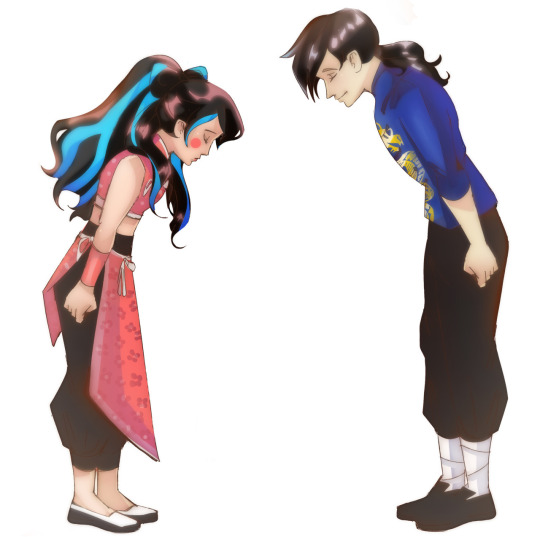
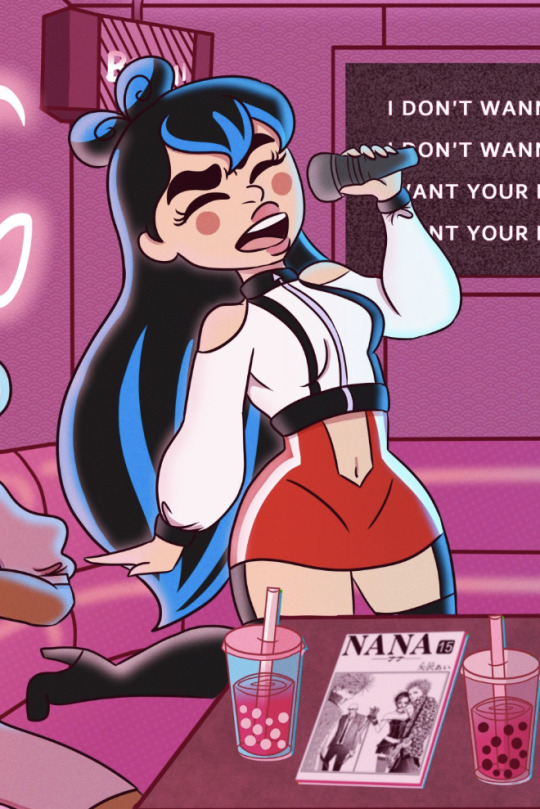
Dai Tai refuses to wear pants. Her thighs always tear through them, and the rare times that she does are when she's training at the Chan Dojo or in a fighting tournament.
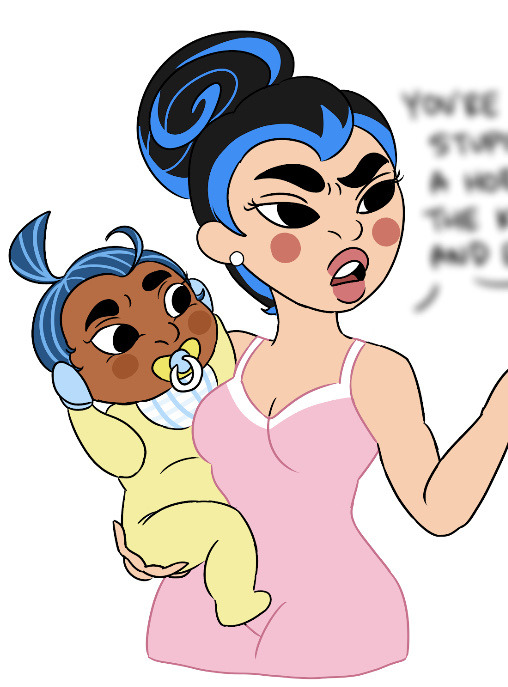
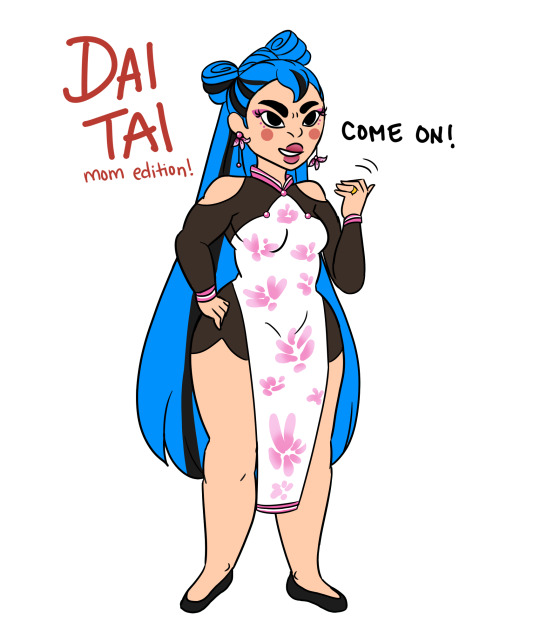
You can assume where Dai Tai is on the timeline based on how blue her hair is. She has less blue in her early adulthood (left) and more in her adulthood/motherhood (right). Eventually her hair will be blue entirely.
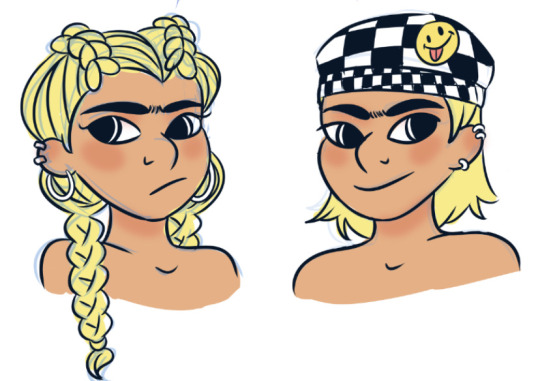
Franny and Mach have noticeable tans because they spend a lot of time outside. When they were kids Helga would get annoyed with them and banish them from the house send them outside to play or Arnold would take them to the beach.
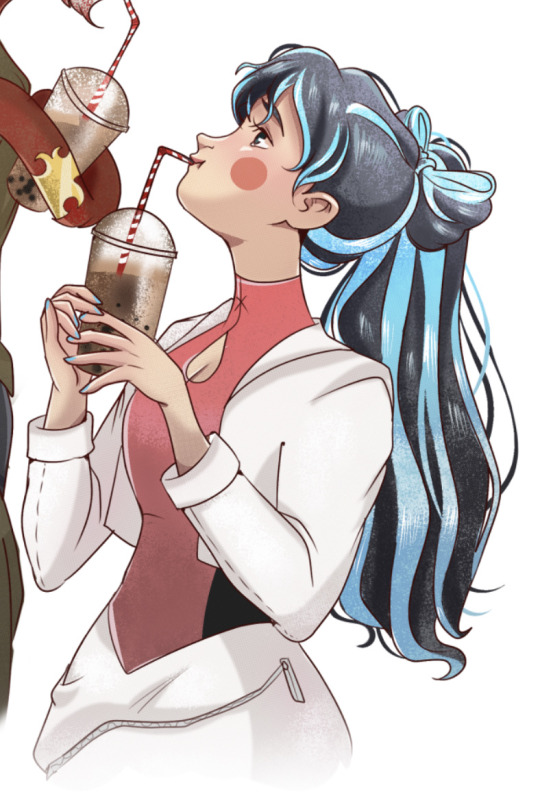

Jia took Dai Tai's original white jacket and altered it for herself. She wears it so that a piece of her sister is always with her no matter where she goes. Other symbolic pieces is her spiked bracelet and choker (to match AJ and Nia), her hoop earrings (a gift from Bianca when they become good friends), the double braids (her mother's hairstyle), and the hoops in her hair (a gift from Queen Elyon).

Dai Tai's headdress includes plums and plum blossoms, which I learned (as I was drawing it at the time) are actually pink...not purple as I wrote them. Oops. 😅
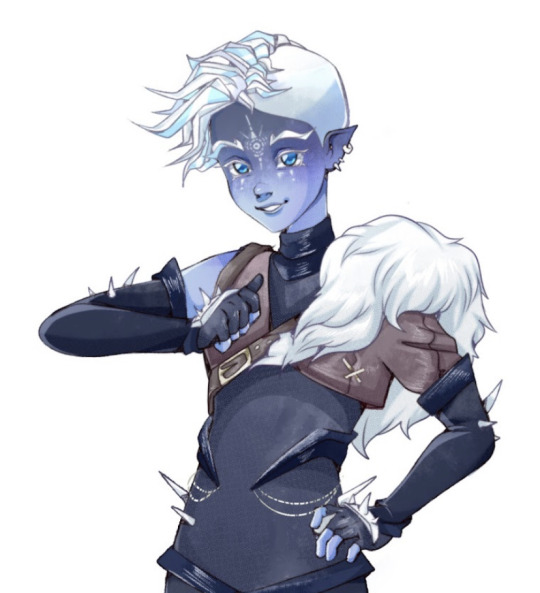
While most Jotunn wear their signature dark leathers, Leif adds brown leathers and furs in his clothing like the Giants of Mewni do. Showing his connection to both races and their cultures. This particular half jacket was a gift from Dianne.
This was just about everything that came to mind but I may remember more later. If anyone has suggestions or ideas for something similar to this post then let me know. ☺️
7 notes
·
View notes
Text
What If... Loki Was Banished with Thor?

Read on A03 | Rated T | Words 12K
Summary: Raised as brothers, Thor and Loki tried to ignore far deeper feelings for each other. When the truth of Loki's heritage is revealed, they feel free to follow their hearts. But the Allfather banishes them to Midgard for it, where Loki helps Thor to prove himself worthy.
Tags: Asgard (Marvel), Good Loki (Marvel), Loki and Thor Are Not Related (Marvel), Asgardian Culture (Marvel), Secret Marriage, Handfasting, Implied Sexual Content, Banishment, SHIELD, Canon-Typical Violence, Jötunheimr | Jotunheim, Jotunn | Frost Giant, Odinsleep (Marvel), King Thor (Marvel), King Loki (Marvel), Canon Universe, Canon Divergence - Thor (2011), Angst with a Happy Ending, Thorki if you squint
A/N: Essentially a Thorki sort of re-telling of the first Thor movie.
24 notes
·
View notes
Text
Ragnarok is extremely good at referring back to norse mythos and translating specific things less known in said mythos to the screen but here are a few things I would have LOVED for them to touch on or refer to;
- Loki and Thor both being redheads in the original norse texts
I just feel like it was a bit of a missed opportunity to do what a lot of modern interpretations of Thor and Loki have done, in letting the fact that the two both have red hair fall to the wayside. (Quick little shout out to God of War for being one of the first instances where I've seen that particular trait kept within their character designs-)
The feature itself was often heavily noted upon anywhere Thor and Loki were concerned. So much so that I'm fairly certain it was one of the reasons why their initial relationship, that of an uncle (Loki) and a nephew (Thor), eventually evolved culturally into that of surrogate siblings.
It also served to highlight just how similar the two actually were. Most notably in how tempestuous both their tempers could be and how prideful they both are as well. Not to mention it would serve as a highlight of the disparity between Thor's less than stellar actions being glorified while Loki's are denounced as tricks and leave him villified.
Not to mention from a story telling standpoint, it would have made the reveal that Laurits is actually Vidar's son and not Asbjørn's a bit less easy to clock but I digress.
- An acknowledgment of a majority of the more notable Aesir having Jotunn ancestry
In terms of the way the show was written, it is understandable that this particular tidbit of info wasn't exactly included.
But it really would have added an interesting take to how Laurits interacted with the other gods, particularly where his more direct connection to the Jotunn in this life was concerned. Because some of the most famous of the Aesir either had direct genealogical or inherited links to the Jotnar in the original myths. Thor, Tyr, Heimdall and even Odin himself to name a few.
So the hypocritical stance the gods (Wotan in particular-) took against Laurits in initially shunning him away for being both Loki in his past life and having direct Jotunn ancestry in this life really would have just nailed home how fickle the other gods truly are. A fact that would have made their eventual turn against Magne for losing his abilities, when he was the one to start the fight against the Jutuls, feel even more like a stab in the back.
- More references to Angrboða and the other children she had with Loki
This is mainly just a little gripe I'd had with the show, in the fact that they all but ignored just how significant Angrboða's union with Loki truly was and what their children endured at the hands of the Aesir simply for being born, especially Fenrir.
I do understand it was due to Laurits being gay in the show (as well as a teenager) but I honestly can't help but feel that they made him so as a way to not have to stress too much about tackling the modern creation stories of Fenrir and Hel. Which sucks because the way they brought Jormungandr to life was genuinely a really interesting take on things.
This is all just my opinion though, if you have differing ones that's more than fine!
#foxglovevibes#netflix ragnarok#ragnarok netflix#ragnarok#magne seier#laurits seier#turid seier#fjor jutul#saxa jutul#wotan wagner#iman reza#ran jutual#vidar jutul
14 notes
·
View notes
Note
Roman, I'd love to hear something mythology related about the mutual evolution of mythology - when two or more cultures feature the same mythological figures despite having little/no contact with each other.
This is actually quite difficult for a layperson to research and because I do not professionally study comparative mythology and religion you're gonna have to take what I say here with that in mind.
It's partially difficult to talk about this because historically the world has always been a lot more interconnected than most people think it is. Some ideas are also way older than we think they are. For example, we have story tropes (not stories but tropes) that possibly date back to when humans first started to spread around and out of Africa. Like one of the Pleiades being hard to see and there being a reason one of the stars either left or became dim. We know this might date back all the way to Africa because while humans were still confined to Africa there was a slight shift in perspective for various reasons that made the seventh star in the Pleiades harder to see. But keeping all that in mind, Here's a couple of stories that I just think are neat.
The 7 sisters get chased into the sky:
The Kiowa people of the Great Plains tell the story of the 7 sisters or the Pleiades like this (based on a telling by I-See-Many-Camp-Fire-Places, Kiowa soldier at Fort Sill, Oklahoma,1897):
One day, seven little girls were playing together by a stream a little too far from the town. As they were playing, a bear saw them and began to rush at them. Seeing the bear coming, the girls began to run back towards town where the adults could fight the bears back. Soon they realized that they couldn't make it back in time so they scrambled up some tall rocks to try to escape, but the rocks were not tall enough. The bears began climbing. Seeing this, the girls began to yell and beg and plead with the rocks to save them, and the rocks did. They grew and grew into a steep pillar that the bears clawed at but could just not climb. And the girls? The kept rising even after the rocks had stopped growing. And they rose and rose up into the sky until they turned into stars.
Compare this to the Greek story of the 7 sisters:
The Pleiades were seven sisters, daughters of the titan Atlas. Because Atlas was stuck holding up the world, he could not protect his daughters and they did not know how to fight. So when the giant Orion saw them and became determined to rape them, all they could do was run and run and run. And they ran and ran and Orion chased them and chased them and would not give up. He was huge, his strides were huge, and he could walk on water. Eventually the sisters realized that Orion would literally never stop, so they cried out to the other gods for help. Zeus heard their cry and lifted them into the heavens to save them from Orion where they turned into stars.
Not exactly the same. The danger is different, but the result is the same.
The Earth is a dead body:
Pangu, from Chinese Mythology:
In the beginning, there was nothing. Then, there was an egg. From this egg emerged Pangu, a hairy unfathomably gigantic man with horns. Pangu separated Yin from Yang and earth and sky from each other with a swing of his mighty axe and to keep earth and sky separated he pushed them apart with his giant body, and after he died, his blood became the rivers, his eyes became the sun and moon, his breath became the wind, clouds, and mist, and his body became the mountains and valleys.
Ymir, from Norse Mythology:
In the beginning, there was ice and fire with nothing but the yawning void between them. Over time, the ice and fire mixed and together they formed a giant named Ymir, a cow, and block of salty ice. From the salty ice and the licking of the cow came a man named Buri. From Ymir came the Jotunns, and Buri's gransons were Odin, Vili, and Ve. The three brothers became tired of there being no world, and the only thing big enough to create a world with was Ymir, so they killed him and from his flesh came the earth, his bones the mountains, his hair the trees, his blood the water, his brains the clouds, and his skull the sky.
Tlaltecuhtli from Aztec mythology:
Before the creation of the 5th world, Quetzalcoatl and Tezcalipoca descended from the heavens and realized that anything they created would be eaten by the monster Tlaltecuhtli standing in the ocean so before the creation of the 5th world, Tlaltecuhtli would have to die. While wrestling with her, one of Tezcalipoca's legs was bitten off, but despite this Quetzalcoatl and Tezcalipoca each grabbed one of Tlaltecuhtli's arms and with a mighty surge of strength tore her in half. Half of her body became the land, while the other half became the sky. Her skin became the plants of the world, Her nose the hills and valleys, her shoulders the big mountains, her mouth the caves, and her eyes the freshwater springs.
So yeah, the earth as a dead body. Weirdly common.
31 notes
·
View notes
Text
More to add for the "Jotnar are Indigenous coded" (maybe) but the different Giant characters like... display different versions of intergenerational Trauma & how each of their families have or haven't dealt with it.
Faye/Kratos/Atreus trio were the most well-adjusted (next to Angrboda's family unit), but still, trauma there, obviously. Faye has had to be on the run & hiding from the people who committed genocide against her people & family, taking on a new name from Laufey to Faye, just to escape them. She had no one to speak her Native language to, which is effectively now a dead language. She had to hide her own heritage from even her own husband and son (first likely for her own safety, & then later because of the prophecy), yet she still told Atreus things she knew about her own culture, & the truth about her people's history. Of course, Faye also took on an active role in literally fighting her oppressors, forging a weapon specifically to kill the person who had committed genocide on her people. Her prime revenge ultimately comes in the form of living a happy life (what a spit in the face to those who want you dead, than to survive, live, & do it happily), having a Jotunn (AND divine) son, a champion of the giants to carry on her work & bring Ragnarok to Asgard. Kratos is the other parent who tries his best to raise his son when he doesn't have knowledge of his wife's culture & supports him to the best of his ability, yet is anxious about Atreus being in the world knowing he's a target for being Jotnar AND expecting to be killed off & Atreus orphaned.
Angrboda/her parents/Gryla showed a similar situation, but instead their family was restricted to hiding in a specific area of their family, causing isolation (& this might be reaching but it reminded me of reservations? Not quite similar but still). Angrboda's parents gave her a healthy coping mechanism that was important to their people (art & creating the murals), taught her magic & their people's ways & culture, about Jotunheim's nature, & taught her how to survive in the world without them before they died. They created a world for Angrboda to live in safely & gave her the tools she needed to survive. Yet we also see how their people's genocide & the aftermath has negatively affected Gryla & her relationship with her granddaughter. Gryla bitterly living in the world that tried to kill her yet still trying to create a softer one for Angrboda, even if their relationship is strained. "She's not evil, she's lost".
Thor/Sif/their kids are obviously the worst off. There's a lot of self hatred with Thor, who has turned away from his Jotun side and allied himself with his mother's oppressors & became one himself. Despite Odin apparently having considered Forgyn his one true love, he doesn't care much for their son or treat him well & physically abused him, which Thor passes onto his children. His trauma, self hatred, & any possible guilt is likely at least partially responsible for his alcoholism. Thor & Sif's violence towards their children causes Magni & Modi to become violent & end up dying trying to kill another Jotun (Atreus). They feel no sympathy or solidarity with other giants but instead ally themselves with the oppressor & are all the worse for it. Atreus even tries to reform Thor somewhat and becomes friends with Thrúd.
#either the writers are fucking geniuses who did their proper research#or they accidentally created one of the best Indig coded races without being weird that I've ever seen#Faye chose to wander the world & help others but had to sacrifice her identity to do it#Angrboda's family chose to remsin in their homeland & keep their traditions but at the cost of being isolated & seperate from others#Thor is the one to completely disregard his Jotun identity altogether#gow#gow ragnarok spoilers#I've been having great convos w rhubarbspring about this#I STILL don't know that the Jotnar being Indig coded is even intentional#& Indig ppl aren't the only ppl to experience inter/generational trauma but I'm finding a lot to extract in similarities from this
39 notes
·
View notes
Text
⏤͟͟͞͞ day 4 of 30 days of devotion to loki ♡
day 4 : favourite myth/myths of this deity?
my favourite myth is that loki is gender fluid, presenting different chaotic ways - a mare, a salmon, a fly and an old woman named Þökk (Old Norse 'thanks'). Also, I find it so interesting how in mythology Loki was merely a personification of Hate, then became a devil. Sources indicated that Loki was originally a demon, or a Jotunn, since he born to two giants. as a result of sharing blood with Óðinn became an Aesir, making him Óðinn's blood brother. In contrast with Marvel comics version of Loki, Loki is actually Þórr's step-uncle, not his brother! it shows the contrast from the Marvel/Pop culture Loki, to norse mythology Loki.
hail loki !

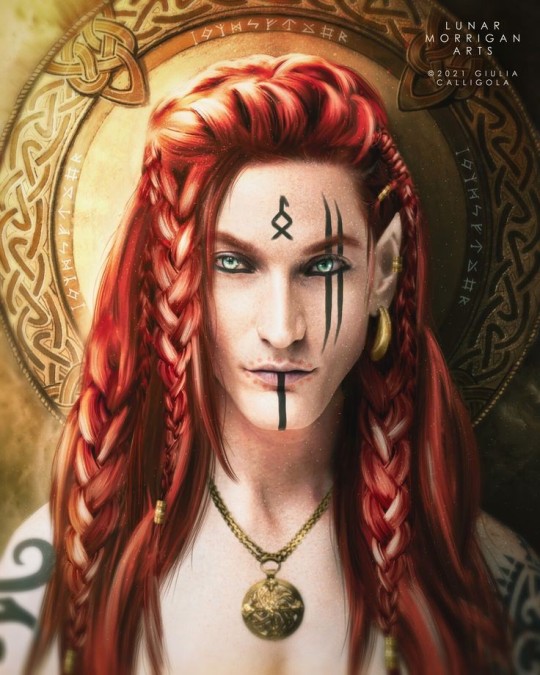
15 notes
·
View notes
Text
Yielding To You
read it on the AO3 at https://ift.tt/lXdMiUI
by TheUltimateUndesirable
Brothers in arms. It’s what Tony had thought they’d been. Best friends through the centuries. From the first day they’d met statuses hadn’t mattered and unlike so many others Loki had stayed by his side through the darkest days of his life. He cared for the Prince, other King, like no one else. Even Pepper hadn’t held a place in his life like he did. Which is why being the genius he is, he just doesn’t understand how he missed every single clue that there was something more underneath their long-established roles.
Words: 3407, Chapters: 1/6, Language: English
Fandoms: Thor (Movies), The Avengers (Marvel) - All Media Types, Iron Man (Movies), Marvel Cinematic Universe, Marvel
Rating: Explicit
Warnings: No Archive Warnings Apply
Categories: Multi
Characters: Loki (Marvel), Tony Stark, Fandral (Marvel), Thor (Marvel), Bruce Banner, Volstagg (Marvel), Frigga | Freyja (Marvel)
Relationships: Loki/Tony Stark
Additional Tags: Alternate Universe - Asgard, Asgard, Asgardian Tony Stark, Everyone's Asgardian, Asgardian Culture (Marvel), Genderfluid Loki (Marvel), Jotunn Loki (Marvel), Loki & Tony Stark Friendship, Best Friends, Secret Crush, BAMF Loki (Marvel), Tony Stark Needs a Hug, Tony Stark Feels, Tony Stark is So Done, Good Loki (Marvel), Loki Does What Loki Wants (Marvel), Loki is Not Amused (Marvel), loki is a little shit, Confusion, Hurt Tony Stark, POV Tony Stark, Love Confessions, Fluff, Tooth-Rotting Fluff, Sappy, Fluff and Smut, Explicit Sexual Content, Anal Sex, Oral Sex, Mpreg, Getting Together, Marriage Proposal, King Loki (Marvel), Angst and Fluff and Smut, Angst and Feels, Angst with a Happy Ending, Author Is Sleep Deprived
read it on the AO3 at https://ift.tt/lXdMiUI
13 notes
·
View notes
Text
Headdanons for the main characters
Daniel Dobermann - 26
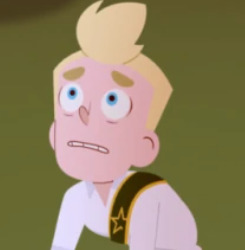
German - Slavic (possibly Czech?)
VERY GIRLY
An incompetent wimp
Amateur scifi writer
Very stupid
Loves to brush hair and go shirtless
LOVES BARBIE DOLLS AND MY LITTLE PONIES
Best pony - hard choice between Pinkie Pie and Rainbow Dash
Bisexual - that means he's very happy when someone kisses, cuddles, and snuggles with him
Loves hugs and cuddles! Very affectionate
Jen Iris - 24
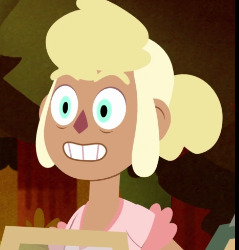
Balinese - Norwegian
Her parents read fairy tales from their cultures every night
Girly as hell
Obsessed with barbies and MLP. Best pony: Pinkie Pie
Bisexual, but prefers men more. But will still kiss a girl if she feels like it
Some ppl compared her to Leni Loud, but as a grown woman.
"Airhead, ditz, dumb blonde, womanchild" cos she is super awkward and playful. But doesn't care cos she wants to be happy.
Can be angry but always ends up crying and wailing.
Very affectionate
Gwen Parkerson - 26

English - African American (hence her red hair)
Free from the awful treatment and rude attitude of Campbell's camp, her new job at the gym was more profitable.
That means more time for writing novels and a second set of income.
Tomboyish, loves to tease and laugh at stupid people (especially Daniel and Jen). But also wants them to be better.
Playful, mischevious
Stronger than Jen and even David cos of her past camping work.
David Avalon - 27
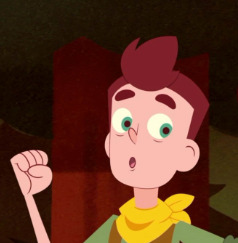
Welsh
Upset with Campbell abusing him and Gwen, they quit, ending Camp Campbell
They took up working out at the gym
Is much stronger than Daniel, due to lumberjack work.
Still a silly man behind his manly self.
Jasper Haraldsson - 29
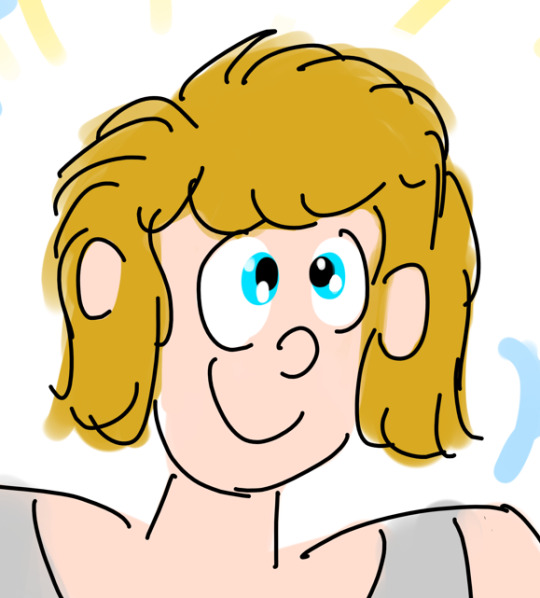
Icelandic
Didn't die, but the explosion traumatised him. He quit the camp and took up surfing, then fitness, to cope with his pain.
Eventually started his own gym.
It's possible that his habit of brushing his hair is a way to relax. Going shirtless also helps him relax
"Half-jotunn" (giant)? No wonder why he's so tall and strong.
Hates fangirls, likes Daniel cos he's an interesting contrast. But sometimes gets annoyed by Daniel being a wimp and an obsessed Barbie fanboy.
Is himself a fan of barbies XD
Pictured below: a stupid drawing of the five goofballs we know and love main characters: David, Gwen, Daniel, Jen, and Jasper

Supporting characters:
Veronica (Beronika) Irakleides (the "cute waitress") - 26
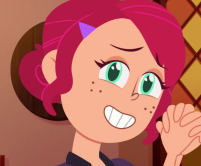
Greek
Possibly a dryad, hence her pinkish hair
Kevin "Dirty Kevin" Marino - 27
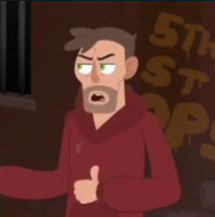
Italian
a huge fan of youtubers like Smosh
Bisexual, male leaning, poly
Bonquisha Moreau - 28

African-American, French ancestry
Loves classical music
She and Jacob are a couple.
Jacob Laurier - 29

African-Canadian, French ancestry
Very intellectual, loves to play the violin
Jacob and Bonquisha are also amateur novellists, and sometimes help Gwen and Daniel in their WIPs.
Graggle - possibly 600 (born in 1400 AD)
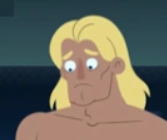
Atlantean - Norse (worships the Greek gods)
The bird that caught him is his stupid pet, Zefyros. The bird did not eat him, but just took him home.
He lives on a next at Sleepy Peak.
He is only a monster cos he's super shy, and doesn't know whether Gwen can be trusted.
Thinks Gwen is some obsessed fangirl that doesn't understand or appreciate him.
Zefyros - possibly 300 (immortal mythical bird)
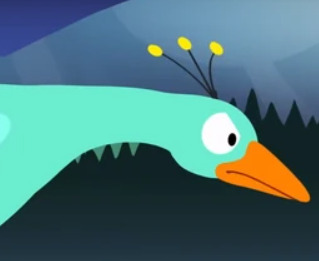
descendant of a rare Atlantean bird
COCKADOODLE DOOOOOOOOO
bawk bawk bawk ba gawk
giant chikkin
Only eats chickens if they're dead or cooked. Most often if people leave chicken meat.
does have chicken DNA
#camp camp#camp camp au#ask blondie daniel#headcanon#cc gwen#cc david#cc jasper#jasper lives#cc jen#cc daniel
3 notes
·
View notes
Text
Magnus Chase Project Idea
The next thing for my list of projects is something a little closer to home and achievable, but also perhaps less anticipated.
Percy Jackson was the first series of novels that I ever read of my own volition. It instilled a love of reading and appreciation of mythology that continues to this very day. When I heard that Riordan was going to be writing a series based on Norse mythology in 2014, I was ecstatic. Unlike before, I had a basis of knowledge to draw from to prepare for the books. When the books were released and I read them though, I felt a little disappointed. I actually have a large document that I wrote back in 2017 detailing all of my criticisms, but I’ll summarize them here:
Magnus Chase as the protagonist goes through a very well defined and meaningful character arc in the first book. It’s probably one of the only things that make him stand out from Percy Jackson, who he can sometimes read as a carbon copy of. In the subsequent two books, however, he loses everything that made him special. His identity as a peacemaker and healer, and his choice to not use Jack the sword as a weapon are all forgotten about.
Rick Riordan’s passion for Greek and Roman history oozes out of everything he wrote for his previous books. And while he did make an attempt, the mythology presented in Magnus Chase and the Gods of Asgard is one of its greatest flaws. The gods of the stories are shallow, one-joke cut-outs compared to the complex parents and power players in PJO. Heimdall is the worst example. Rather than echoing themes and remixing myths, oftentimes the characters play out recreations of Norse myths word for word during the course of the story. Norse mythology has a lot of large gaps in its content, meaning that an author will almost certainly have to bridge them with their own creations at some point. Riordan chooses to do this by mixing in modern culture and folklore from the 1800’s of Scandinavia.
This book was not the first to feature cross-overs from other Riordan books, but it is the one that leaned the most heavily on them. Annabeth’s inclusion in the first book was appropriate, but it seemed like pandering to include Percy in the last one. When reading reviews to refresh myself for writing this, a good percentage of them cried out about their insufficient screen time.
Slavery. The mythology point above makes me the most peeved, but this one baffled me as I read the books. One of the first einherjar characters introduced is Hunding, from the Volsung Saga. In the Saga, another of the characters, Helgi, kills Hunding, and his reward for the victory is that Hunding becomes his slave in Valhalla, commanded to “of every hero / Wash the feet, | and kindle the fire, / Tie up dogs, | and tend the horses, / And feed the swine | ere to sleep thou goest”. This is present in the books, but couched in PG13 language, so that Hunding is Helgi’s “servant”. One of the main cast of characters is Thomas Jefferson (TJ) Jr., a runaway slave that died fighting in the Civil war. In the third book, one of the other main characters replays a scene from mythology where she gets a bunch of jotunn slaves to accidentally kill each other. This character then apologizes to TJ for killing the slaves and they make up off-screen. Hunding is never rescued from eternal slavery, the existence of slavery in Valhalla is never acknowledged, the end.
So what? Why did I list all of my gripes with the series and put it under the future projects title? Well, after I wrote my laundry list in 2017, I capped it off with a “what I would do” section. I’ve never been able to get into the realm of fan fiction. But what about fan rewrites? Rewriting the book chapter by chapter with my own changes?
The reason I haven’t done this is because, again, I don’t have a foot in the fan fiction world, and for most of my time I’ve thought that spending so much time and effort working on something like that would be a waste of my time when I could be working on my own stuff. But recently I’ve been rethinking that. Finding the motivation to work on my own Acronym Pending series is conflicting with my anxiety about perfecting it so that I don’t tear it down a month afterwards. What if working on fan fiction doesn’t trigger this response? After all, the hard work’s already been done. If I end up doing this, it will be because I can’t bring myself to work on the TDG, which is bad, but it would mean something is still getting done, even if it’s something I cannot claim as 100% my own.
What would I do differently? Here’s a few examples:
Magnus is not a demigod. Demigods are not a big thing in Norse sagas or myths, and it links the series too much to the previous ones.
Samirah would not be a valkyrie, but another of the einherjar.
Valhalla and the Norse elements would not be modernized, at all.
Hearthstone’s father would be Volundr.
Overall, the story would be closer to a runaway tale rather than a hero’s journey. The overarching mythological theme would be focused on breaking the cycle.
#magnus chase#magnus chase and the gods of asgard#mcga#magnus chase spoilers#rick riordan#writing#writing idea#fan fiction idea
4 notes
·
View notes
Text
jotunn culture as pertaining to my portrayal of Skadi
(I made all of this up in RPs. Most of this is applicable to both Marvel/urban fantasy Skadi & Skathi, her D&D verse)
They use various grunts & growls as secondary communication. While a jotunn’s face may seem calm/unreadable, the noises they are making easily betray their emotions. Jotunn begin to communicate this way from infancy, allowing parents to understand their child’s basic desires.
Their sharp teeth have adapted both to rip through tough meat for digestion & to stimulate their partners so they produce the fluid necessary for procreation & climax. This also means that, like other Jotunn, Skadi has erogenous zones on the sides of her neck.
Their race is prone to deformities caused either in the womb or while out in the harsh mountains.
Impacted by the prior point, 1 of the most important values is being adaptable, which is why many who lack certain limbs (for example) often cover parts of their bodies w/their own strengthened ice to use as weapons.
Another value is independence. Though Jotnar often go out hunting in small parties, those who actually make kills (especially if they are unassisted) get the bulk of the meat.
The most common pastimes of Jotunn are wrestling & singing (both folk songs & oral poems/epics).
Their language resembles German, in comparison to Asgardian, which resembles Norwegian.
Though Jotnar are born with ridges & grooves in their skin, some are actually tattoos used to represent important achievements (like a 1st successful hunt). Skadi, being half-Asgardian, was born w/o these, so she uses blue paint to make her markings before she goes on hunts.
Jotnar religion is animistic, so they believe that their environment is full of spirits worth praying to. These spirits were said to grant things like speed & strength, but only temporarily.
Most of the animals hunted by Jotnar resemble our mammals given the tough skin & appendages of reptiles/dinosaurs.
Jotunn can resist the cold w/o clothing in most cases, so they go about naked, genitalia resting w/in the body (as is the case w/many reptiles) for both males and females. Skadi wears clothes both because her tolerance for cold is somewhat lower compared to her father’s people & because other people tend to become uncomfortable when she doesn’t.
Frequent storms/cloudy skies led to the Jotunn having red sclera (part of the eye that’s white in humans). This makes them vulnerable to UV rays, both in terms of extreme heat & light.
All sexes & genders are considered equal, due to the fact that all must brave the harsh climate (& all, from a biological standpoint, are responsible for the continuation of the race). They just are sex-positive to the point where asexuality (note: not aromanticism) is frowned upon & they see themselves as superior to other races (in part because Ymir was the 1st humanoid).
They are grouped into various tribes that have their own rules, but ultimately they all answer to the same king & queen (whose rule can be challenged at any time). The royals have a harem & every child conceived therein can be considered legitimate.
Those who wish to marry must wrestle at least 1 of their fiancé's admirers & win the fight(s). Otherwise, they are seen as "unfit" & they may be shunned from the tribe.
1 note
·
View note
Note
Do you think Asgardians have homophobia? I know Loki was looked down on for not being masculine, would liking men be an issue? I'd love to imagine a more progressive Aesir society, but the movies show that's not the case. Racism against Jotunn and mortals alike, for example.
I theorize that Loki must not gave been well regarded amongst the common folk, either, but other than Thor preference in general, there's no Loki fanfare. I was a bit disappointed that AoA had Elliot Randolph talking a bit about life as a common soldier and citizen but didn't do much for details on their view of the younger prince.
Oh my, this is pure headcanon because unless I'm forgetting something they never addressed that or anything of the sort in canon. Correct me if I'm wrong though.
I want to believe they're not homophobic and I kinda think Asgard would see it more like this:
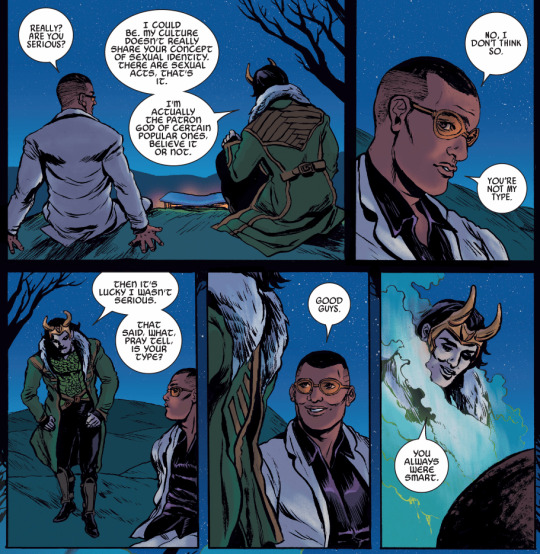
It would be silly to expect an entirely different planet to go by our rules and see core values such as romance and sex the same way we do. Loki was definitely looked down upon but I don't think that had to do with his sexual orientation - or even that sexual orientation would be a thing on Asgard in the first place. Keep in mind centuries ago it wasn't a thing here either, that only changed with religion and culture shifts.
They do seem to have an ideal of masculinity that is similar to certain traits of toxic masculinity but it's also true that while Thor might be the embodiment of some of those in his first movie he's also a man who doesn't entirely fit the criteria either. He's gentle, he's kind, he apologizes when he does something wrong, he has no issue with physical touch be it with men or women, he acknowledges other people's feelings...
Racism is a whole different issue though, they're high on that one. It's clear they think of themselves as the superior race and they feel entitled to other realms and think other beings are beneath them.
8 notes
·
View notes
Text
Jötunheimr (Repost)
read it on the AO3 at https://ift.tt/hAxweNU
by aylithe (englishbutter)
Thor 1 AU in which Laufey recognises Loki in the attack on Jotunheimr and demands him back. Whilst Loki must come to terms with his new, despised life on Jotunheimr, Thor plots how to fix his mistakes and get Loki back.
Featuring Jotunheimr worldbuilding, a mountain of angst, and complicated family dynamics.
Hopefully reuploaded for the last time.
Words: 195853, Chapters: 34/34, Language: English
Fandoms: Thor (Movies), Marvel Cinematic Universe
Rating: Mature
Warnings: Creator Chose Not To Use Archive Warnings
Categories: F/M
Characters: Loki (Marvel), Thor (Marvel), Laufey (Marvel), Farbauti (Marvel), Byleistr (Marvel), Helblindi (Marvel), Sigyn (Marvel), Angerboda (Marvel), Sif (Marvel), Various MCU Characters
Relationships: Loki/Sigyn (Marvel), Sif/Thor (Marvel)
Additional Tags: Jotunn Loki (Marvel), Jötunheimr | Jotunheim, Worldbuilding, Alien Culture, Angst and Feels, Fantastic Racism, Identity Issues, Dysfunctional Family, Politics, Alternate Universe - Canon Divergence
read it on the AO3 at https://ift.tt/hAxweNU
2 notes
·
View notes